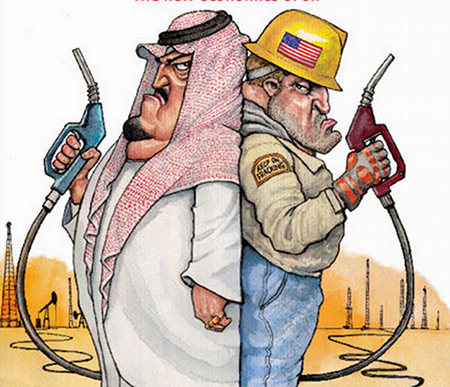Hooray, oil is suddenly much cheaper than it used to be. That's great news, right?
Not so fast. For certain it's not good news for those counting on a continued rise in US oil production from the "shale miracle". Many drillers were challenged to operate profitably when oil was above $70 per barrel. Very few will remain solvent with oil in the $50s (as it is as of this writing).
So, expect US oil production to suffer from these lower prices if they persist. But even if oil prices rise and rise soon, there's new data that indicates the total amount of extractable oil from America's shale plays is less -- much less -- than what we're being told (or better put, "sold").
On today's podcast, Chris talks with oil analyst David Hughes, who has analyzed the major shale plays utilizing a massive database of well production results from America's shale basins. The data show that declines tend to be hyperbolic in all shale fields. The average first-year decline is 70%; down to 85% by year three. And we're drilling the best parts of these plays first: meaning that future wells will yield less even under the best results.
We're pinning our hopes of "oil independence" on faulty assumptions. Worse, we're using it to dismiss the Peak Oil theme at exactly the time we should be using this extra oil to construct the infrastructure for our next energy age (whatever that may look like), while we still have the net energy available to us:Let’s just take a play like the Bakken.: 45% annual field decline, sweet spots are getting to be drilled out. We know that they need to drill 1,500 wells a year just to keep production flat. But as you go into lower quality rock, the well quality in most of the play's extent is only about half of what it is in the sweet spot. If you have to rely on the lower quality part of the play you need 3,000 wells per year instead of 1,500 to offset the field decline. But the wells aren’t any cheaper. They cost the same amount to drill. To be profitable for producers, it's going to take a lot higher prices in order to make that happen. And you can go through play after play and see the same thing. We are drilling the best parts of the plays now and it is just going to get worse down the road. We are going to need higher and higher prices.
The EIA has not only made what I consider really optimistic estimates on production, they have also made optimistic estimates on price. A lot of the infrastructure that is being built today is based on the assumption of cheap prices for the foreseeable future. That is not in the cards. With these recent cheap prices we are going to see production go down a lot faster than my estimates. My estimates are best case: I assume that the capital will always be there to drill the wells and that there will be no environmental concerns that restrict access to drilling locations. So in that way I am the best case. But even if you take my best case, the medium and long-term supply picture from shale is disturbing.
Sadly, corporations tend to think about the next couple of quarters. Politicians may think about the next election, but an energy sustainability plan has to have a vision of decades we certainly don’t see that in all the hype read every day. If you look at the mainstream media, I don’t think there is a lot of original research that is done there. I think people tend to repeat what other people said and it kind of takes on a momentum of its own, which is why I was so interested in trying to lay out as much of the basic data on these shale plays as I could. It's dangerous.
I mean, if you look at the infrastructure going forward in an era of declining oil and gas the number one way to promote energy sustainability in my view is figuring out ways to use less. And some of the infrastructure that needs to be built in order to give people an alternative to high energy throughput lifestyles takes a lot of oil and gas to build. And you know, this short term bounty that we are looking at should in fact be used to do that not to maintain business as usual to the bitter end and then face the consequences.
The Shocking Data Proving Shale Oil Is Massively Over-hyped



























Laissez un commentaire Votre adresse courriel ne sera pas publiée.
Veuillez vous connecter afin de laisser un commentaire.
Aucun commentaire trouvé